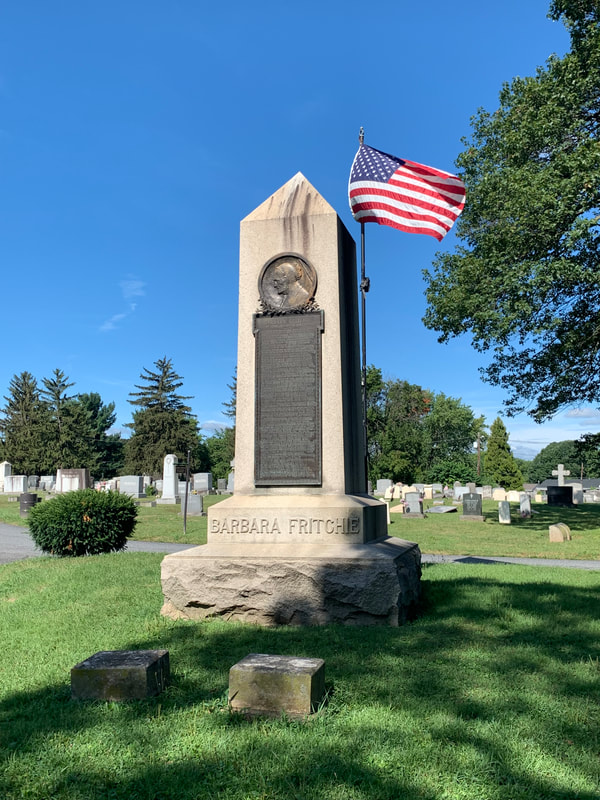Barbara Fritchie Monument
Location: Area MM/Lot 00
Date of Placement: September, 1914
Decedents: Barbara Fritchie and John Casper Fritchie
Monument inducted into the Hall in August, 2021 (Class #1)
Location: Area MM/Lot 00
Date of Placement: September, 1914
Decedents: Barbara Fritchie and John Casper Fritchie
Monument inducted into the Hall in August, 2021 (Class #1)
The second most famous person in Mount Olivet was removed here just like Francis Scott Key. This, of course, is our Civil War heroine, Barbara Fritchie. It is interesting to note that both of these individuals, Frederick’s most famous, became household names because of a song/poem about the US flag under attack by an enemy during wartime.
This monument was erected in 1914, after the star of John Greenleaf Whittier’s poem and her husband (John) were relocated here the previous year from their original grave plot in Frederick’s German Reformed Graveyard, a location now known as Memorial Park. The 12-foot tall obelisk is extremely modest and scaled down in comparison to an earlier proposed memorial to be placed at the location in downtown Frederick where the fountain now stands at the intersection of Seventh and Market streets. Bronze pieces are affixed to this large granite shaft, each sculpted by Artist James E. Kelly (1833-1855). These include a profile view of Barbara in the form of a large medallion, along with Whittier’s 1863 poem in its entirety for visitors to read.
This monument was erected in 1914, after the star of John Greenleaf Whittier’s poem and her husband (John) were relocated here the previous year from their original grave plot in Frederick’s German Reformed Graveyard, a location now known as Memorial Park. The 12-foot tall obelisk is extremely modest and scaled down in comparison to an earlier proposed memorial to be placed at the location in downtown Frederick where the fountain now stands at the intersection of Seventh and Market streets. Bronze pieces are affixed to this large granite shaft, each sculpted by Artist James E. Kelly (1833-1855). These include a profile view of Barbara in the form of a large medallion, along with Whittier’s 1863 poem in its entirety for visitors to read.


